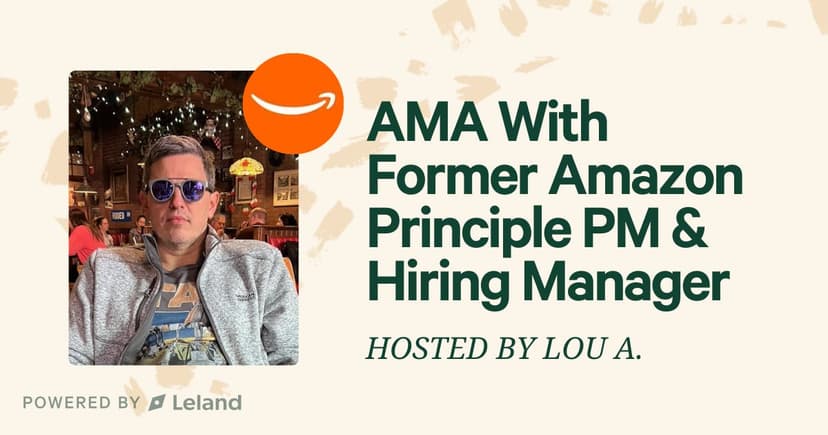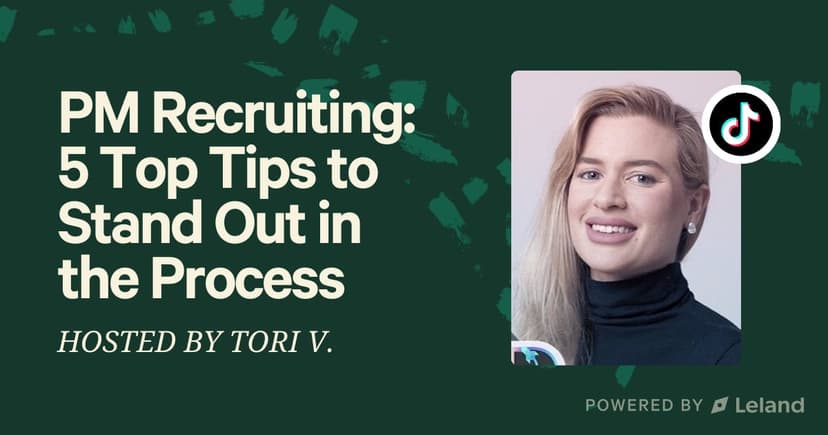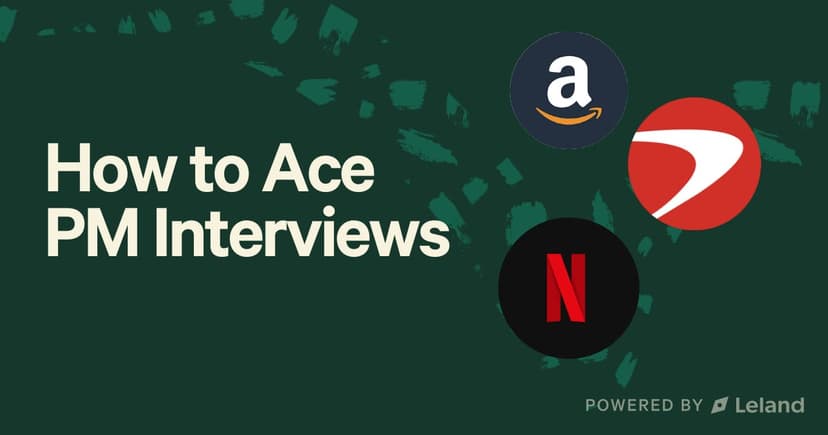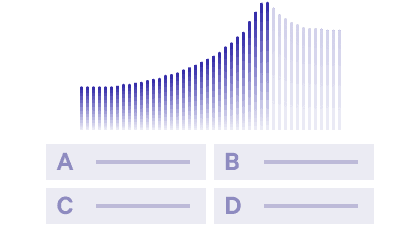Amazon Product Manager: Role, Salary, and Application Tips
Are you looking to break into the world of product management at Amazon? Look no further! Our comprehensive guide will provide you with the tips and strategies you need to land your dream job as an Amazon PM.
Posted July 10, 2025

Join a free event
Learn from top coaches and industry experts in live, interactive sessions you can join for free.
Table of Contents
Amazon Product Managers help build new products, improve customer experience, and grow the business. They work with different teams, make product decisions based on data, and focus on what customers need. Amazon looks for people who can solve problems, think strategically, and follow its Leadership Principles. The hiring process includes multiple interviews, behavioral questions, and a writing test. This guide explains the Amazon Product Manager role, salary, and application process to help you get ready and ensure customer satisfaction.
What Does an Amazon Product Manager Do?
An Amazon Product Manager (PM) plays a central role in defining, building, and scaling products that impact millions of customers. They are responsible for managing the entire product lifecycle—from identifying customer pain points to launching and iterating on solutions. This requires working across multiple teams, including engineering, marketing, sales, design, and data science, to develop and execute a clear product roadmap.
The PM role at Amazon is unique because of the company’s strong emphasis on data-driven decision-making and customer obsession. As a customer-centric company, every product decision is backed by customer research, A/B testing, and performance metrics. PMs must be comfortable working with data, setting success metrics, and continuously refining product features based on customer feedback.
Key Responsibilities of an Amazon Product Manager
- Defining the product vision and strategy – Aligning product goals with Amazon’s business priorities and customer needs.
- Developing a product roadmap – Prioritizing features and defining the timeline for execution.
- Leading cross-functional teams – Working with engineering, design, business, and partner services teams to build and launch new features.
- Conducting customer research – Analyzing customer behavior, feedback, and market trends to improve products.
- Setting and tracking key performance indicators (KPIs) – Measuring product success based on adoption, engagement, and revenue impact.
- Driving go-to-market strategies – Collaborating with marketing and sales teams to launch new products and services.
- Managing product iterations – Gathering post-launch feedback and continuously improving products.
Customer Obsession and the Amazon PM Role
Amazon is a customer-centric company, and customer obsession is at the heart of every PM’s work. The ability to anticipate customer needs, solve pain points, and improve satisfaction is what separates a good Amazon PM from an average one.
Amazon PMs spend a significant portion of their time conducting customer research—analyzing reviews, surveys, support tickets, and direct feedback to gain insights into customer pain points. They use this data to optimize user experience, simplify workflows, and introduce new features that align with what customers actually want.
Amazon’s Leadership Principles guide product managers in making decisions that balance business needs with customer satisfaction. PMs are expected to act as the voice of the customer, advocating for their needs while also ensuring business profitability.
A few ways Amazon PMs apply customer obsession in their work:
- Using A/B testing and customer behavior analysis to refine product decisions.
- Prioritizing features that reduce friction and improve usability.
- Working closely with customer support teams to track pain points and identify recurring issues.
- Constantly iterating on products to deliver the best possible experience.
How Amazon PMs Differ from Other Tech Companies
Amazon PMs operate differently from those at other top tech companies like Google, Meta, or Microsoft. While product management at these companies often involves a specialized focus on design, engineering, or marketing, Amazon PMs tend to have broader ownership and accountability.
| Aspect | Amazon PMs | Other Tech Companies (Google, Meta, Microsoft, etc.) |
|---|---|---|
| Autonomy & Ownership | PMs are directly responsible for product decisions, often acting as mini-CEOs of their product. | PMs work in collaborative decision-making environments, often requiring approvals from multiple teams. |
| Customer Obsession | Every product decision is centered around customer feedback and behavior data. | PMs balance customer needs with advertising, engagement, or other business goals. |
| Data-Driven Execution | Strong emphasis on metrics, performance tracking, and financial impact. | PMs focus more on long-term innovation and experimentation. |
| Speed & Iteration | Amazon moves fast—PMs launch MVPs (Minimum Viable Products) quickly and improve over time. | Companies like Google or Microsoft often go through longer R&D cycles. |
| Cross-Functional Work | PMs work closely with engineering, logistics, partner services, and sales teams. | PMs typically collaborate more with designers, marketing, and researchers. |
Expert Tips: If you’re interested in a PM role at Amazon, it’s important to understand that success depends on ownership, customer obsession, and the ability to execute under pressure. Those who thrive in this environment are data-driven, adaptable, and comfortable making product decisions with incomplete information.
Amazon Product Manager Salary and Career Growth
Compensation Overview
Amazon Product Managers are among the most well-compensated professionals in the industry, with total pay including base salary, stock options, and bonuses. Compensation varies based on experience level, location, and business unit, with roles such as technical program manager also seeing competitive salaries, especially in Silicon Valley, San Francisco, and Seattle.
A significant portion of an Amazon Product Manager’s total compensation comes from Restricted Stock Units (RSUs), which are distributed over four years. Amazon’s compensation structure incentivizes long-term performance, making it attractive for those who plan to stay with the company.
Amazon Product Manager Salary Breakdown
| Experience Level | Base Salary | Total Compensation (Stock + Bonus) |
|---|---|---|
| Entry-Level PM (PM I & PM II) | $110,000 - $140,000 | $140,000 - $180,000 |
| Senior PM | $150,000 - $180,000 | $200,000 - $250,000 |
| Principal Product Managers (PPM) | $200,000+ | $300,000+ |
Amazon hiring product managers at different levels depends on previous experience, product management expertise, and ability to lead cross-functional teams. Stock-based compensation increases as PMs move up the ranks, with Principal Product Managers earning the highest RSU packages.
Factors Affecting Salary at Amazon
- Experience Level – Entry-level PMs earn lower salaries, while senior leader roles like Principal Product Managers receive higher compensation.
- Location – Silicon Valley, San Francisco, and Seattle typically offer higher salaries due to market demand and program management opportunities.
- Business Unit – AWS and high-revenue teams offer more competitive pay than retail-focused teams.
- Performance – High-performing PMs may receive additional stock grants and promotions.
- Market Conditions – Salaries fluctuate based on industry demand and competitor compensation.
Career Progression: From Associate to Principal Product Manager
Amazon Product Manager Career Levels
Amazon follows a structured career path for product management, with clear expectations at each level. Promotions depend on product management experience, leadership principles, and impact on the business.
| Role | Key Responsibilities | Experience Level |
|---|---|---|
| Product Manager (PM I & PM II) | Works on customer research builds product roadmaps, and executes on strategy. | 2-5 years of experience, bachelor's degree preferred. |
| Senior Product Manager (S-PM) | Leads product decisions, collaborates with engineering and sales teams, and manages end-to-end product execution. | 5+ years of product management experience, and strong project management skills. |
| Principal Product Manager (PPM) | Works with senior leaders defines business strategy, and leads large-scale product initiatives. | 8-10+ years, deep knowledge of technical program management and partner services. |
Promotion Criteria for Amazon PMs
- Business Impact – Proven success in product strategy, market expansion, and revenue growth.
- Leadership Principles – Ability to apply customer obsession, ownership, and bias for action in daily work.
- Cross-Team Collaboration – Experience working with engineering, sales teams, and partner services.
- Data-Driven Execution – PMs must analyze data to improve customer experience and product performance.

How to Apply for an Amazon Product Manager Role
Job Description and Qualifications
Amazon is hiring product managers across various business units, including AWS, Alexa, and e-commerce. Each product manager role may have slightly different requirements, but most PM job descriptions emphasize:
Minimum Qualifications for Amazon PM Roles
- Bachelor’s degree in business, engineering, or a related field (MBA preferred for senior roles).
- 2-5+ years of product management experience (varies by level).
- Experience developing and managing a product roadmap.
- Strong analytical and data-driven decision-making skills.
- Ability to work with sales teams, engineering, and program management to execute product strategies.
- Knowledge of Amazon’s leadership principles and ability to apply them in decision-making.
Preferred Qualifications (For Senior Roles)
- Five years or more of experience in product management, program management, or project management.
- Experience working in top tech companies or fast-paced startups.
- Technical background (especially for AWS or AI-based products).
- Experience leading cross-functional teams and collaborating with partner services teams.
- Strong emphasis on customer obsession and improving customer experience through research and data.
Writing an Effective Resume and Cover Letter
Resume Best Practices
- Show measurable impact – Use data, KPIs, and revenue figures to demonstrate how your product decisions improved performance, customer experience, or revenue growth.
- Use Amazon’s leadership principles – Align experience with principles like Ownership, Bias for Action, and Customer Obsession.
- Keep it concise – Amazon prefers straightforward resumes that highlight the impact, not fluff. Avoid long paragraphs or excessive details.
- Highlight technical and analytical skills – PMs at Amazon need to analyze market trends, research customer needs, and make data-driven decisions.
Expert Tips: Your resume and cover letter should be focused, results-driven, and tailored to Amazon’s hiring criteria. A generic resume will not work. Data and measurable impact are critical to getting noticed.
Common Mistakes to Avoid in the Application Process
Applying Without Reviewing Amazon’s Leadership Principles
- Every Amazon product manager interview will include behavioral questions related to leadership principles. Failing to demonstrate these principles in your resume and cover letter lowers your chances of moving forward.
Submitting a Generic Resume Without Data-Driven Results
- Amazon values data-driven PMs, and generic resumes without metrics, KPIs, or specific impact will not stand out.
Ignoring the Writing Assessment Portion of the Process
- Amazon PM candidates often receive a writing assessment after the second phone screening. This evaluates communication skills, strategic thinking, and structured problem-solving.
Amazon Product Manager Interview Process
Phone Screening: First and Second Rounds
The interview process starts with two rounds of phone screening. The first phone screening is with a recruiter and focuses on previous experience, product management background, and familiarity with Amazon’s Leadership Principles. The recruiter will ask general questions to assess whether the candidate meets the basic qualifications for the role. If successful, candidates move to the second phone screening, which is conducted by a hiring product manager or senior leader. This round is more detailed and includes behavioral questions, functional questions, and discussions about product strategy, execution, and customer satisfaction. Candidates should expect to talk about customer research, decision-making frameworks, and how they have led cross-functional teams in the past.
Writing Assessment and Functional Questions
After passing the phone screenings, candidates often receive a writing assessment, which is a critical step in the interview process. Amazon places a strong emphasis on written communication, requiring PMs to express complex ideas clearly and concisely. The writing assessment is typically a one-page prompt, asking candidates to analyze a product decision, suggest improvements, or explain a strategic approach. This step helps evaluate a candidate’s ability to structure thoughts logically, communicate effectively, and present a compelling argument backed by data. Alongside the writing assessment, candidates may also be asked functional questions related to product management, strategy, and customer needs. These questions assess a candidate’s ability to prioritize features, define success metrics, balance trade-offs in product decisions, and enhance customer satisfaction.
Interview Loop: Behavioral and Technical Interviews
Behavioral Interview: Leadership Principles in Action
Amazon places a strong emphasis on leadership qualities, so candidates must demonstrate alignment with Amazon’s Leadership Principles through real-world examples. Interviewers expect detailed responses structured using the STAR method (Situation, Task, Action, Result) to showcase customer obsession, ownership, and delivery results.
Candidates will be asked about challenges they’ve faced in product management, decisions they’ve made under pressure, and how they’ve influenced teams. Responses should highlight the impact, measurable outcomes, and decision-making processes.
Technical Interview: Engineering, Data, and System Thinking
While Amazon Product Managers are not expected to code, they must have a strong understanding of system design, data structures, and how to collaborate with engineering teams. Amazon PMs must be able to communicate effectively with engineers, understand trade-offs, and use data to drive product decisions. While coding skills are not required, familiarity with SQL, A/B testing, and system architecture can be beneficial.
Common Amazon Product Manager Interview Questions
Behavioral Questions and Leadership Principles
- How have you influenced a senior leader on a major product decision through customer research?
- “Tell me about a time when you had to make a difficult product decision with incomplete data.”
- “Describe a situation where you disagreed with a stakeholder. How did you resolve it?”
- “Give an example of when you prioritized customer needs over business objectives. What was the outcome?”
- “Tell me about a mistake you made on a project and how you handled it.”
Functional and Technical Program Manager Questions
- How would you improve Amazon Prime?
- How would you manage a delay in product delivery as a technical program manager?
- “How would you design a scalable product recommendation system for Amazon?”
- “What KPIs would you track to measure the success of Amazon Prime?”
- “How would you optimize delivery times for Amazon Fresh?”
- “Explain how you would work with engineering to improve website load speeds.”
How to Prepare for an Amazon Product Manager Interview
Researching Amazon’s Leadership Principles
Amazon evaluates candidates based on 16 Leadership Principles, which serve as the foundation for the company’s culture and decision-making process. Every interview round, including behavioral and technical discussions, will assess how well a candidate aligns with these principles. Candidates must not only memorize them but also be able to apply them to real-world scenarios from their previous experience.
Key principles to focus on include:
- Customer Obsession – Prioritizing customer needs in every decision, reflecting Amazon's identity as a customer-centric company.
- Ownership – Acting as an owner and taking full responsibility for product outcomes.
- Bias for Action – Making quick, data-driven decisions in fast-paced environments.
- Deliver Results – Ensuring measurable impact in product execution.
Practicing Customer-Centric Interview Responses
Amazon is a customer-centric company, and customer satisfaction is a recurring theme in product manager interviews. Candidates must show how they have used customer insights to drive product decisions. A strong response should demonstrate how customer insights were gathered, how they influenced product decisions, and what measurable improvements were made. Candidates should reference customer research methods such as surveys, A/B testing, and behavioral analytics to support their answers.
Post-Interview Steps and Follow-Up
Writing a Thank-You Email
Candidates should send a thank-you email within 24 hours of the final interview. The email should be personalized, referencing key discussions from the interview, and reaffirming enthusiasm for the role. A well-crafted thank-you note demonstrates professionalism, continued interest in the position, and a commitment to enhancing the customer experience.
What to Expect After the Interview Loop
Amazon typically takes one to two weeks to make a hiring decision after the interview process and interview loop. Some candidates may receive an offer quickly, while others may have to wait for internal discussions and approvals. Candidates may also receive a follow-up request for additional information or clarifications.
How to Handle a Job Offer or Rejection
If offered the job, candidates should:
- Review the full compensation package, including base salary, stock options, and bonuses.
- Negotiate if necessary, especially regarding stock grants and performance-based incentives.
- Clarify role expectations, team structure, and career growth opportunities.
If rejected, candidates should:
- Ask for feedback to understand areas for improvement and how customer satisfaction could be enhanced.
- Reflect on interview performance and refine answers for future opportunities.
- Please stay connected with Amazon recruiters, as they may reach out for other roles in the future.
Final Thoughts
Amazon Product Manager roles are highly competitive, requiring strong product management experience, strategic thinking, and a customer-first mindset. The interview process is structured, with phone screenings, a writing assessment, and an interview loop covering behavioral, technical, and product strategy discussions. Candidates who demonstrate Amazon’s Leadership Principles, data-driven decision-making, and cross-functional collaboration have the best chance of success. With competitive salaries, stock options, and career growth opportunities, Amazon remains one of the top tech companies for product managers. Preparation is key—refining past experiences, practicing interview questions, and understanding Amazon’s customer obsession will set candidates apart.
Work with Product Management Coaches
Work with a Product Management Coach to improve your skills, prepare for interviews, and plan your next career step. Whether you’re starting or aiming higher, coaching can help you succeed.
Take the opportunity to learn from industry experts, gain new perspectives, and enhance your skills with these additional resources:
- The Most Common Technical Product Manager Interview Questions -- and How to Answer Them
- What is Product Management?
- What Is a Product Lead and Why Is It So Important?
- The Product Execution Interview: Ultimate Guide (With Common Questions)
- The 50 Most Common Product Manager Interview Questions (With Sample Answers)
FAQs
Does Amazon require technical skills for PM roles?
- Amazon Product Managers do not need to be engineers or write code, but they must have a strong understanding of technical concepts and customer experience. PMs work closely with engineering teams and need to understand system design, APIs, cloud computing, and data structures to make informed product decisions. They should also be comfortable discussing technical trade-offs, scalability, and performance metrics with developers.
How much does an L6 Product Manager make at Amazon?
- An L6 Product Manager at Amazon, also known as a Senior Product Manager (S-PM), earns a total compensation package between $200,000 and $250,000 per year, depending on location, stock grants, and performance bonuses.
Who is the most famous Product Manager?
- One of the most well-known tech product managers is Marissa Mayer, who played a key role in Google Search and Google Maps before becoming CEO of Yahoo. Other notable product leaders include:
- Sundar Pichai – Former PM at Google, now CEO of Alphabet.
- Marty Cagan – Author of Inspired and a widely recognized thought leader in product management.
- Gibson Biddle – Former VP of Product at Netflix, known for shaping Netflix’s recommendation engine and subscription model.
Do product managers get paid well?
- Yes, product managers are among the highest-paid roles in tech. Salaries depend on experience, industry, and company, but PMs in top tech companies like Amazon, Google, and Meta can earn $150,000 - $300,000+ annually, especially at senior levels (L6 and above).
Browse hundreds of expert coaches
Leland coaches have helped thousands of people achieve their goals. A dedicated mentor can make all the difference.



























